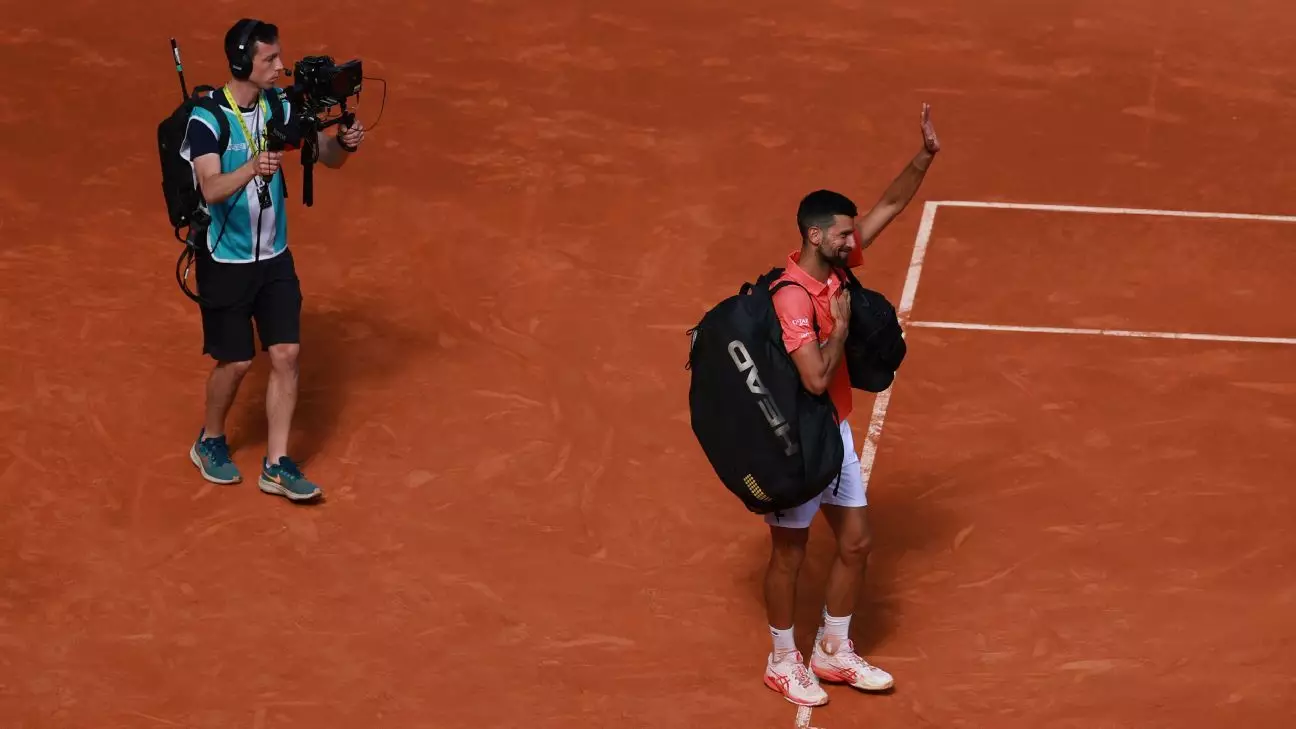In a captivating match at the Madrid Open, the veteran champion Novak Djokovic faced a surprising defeat at the hands of Matteo Arnaldi, a player who sees the Serb as an idol. This stark encounter was a vivid illustration of the unpredictable nature of sports, particularly in the realm of tennis, where fresh talent often shakes up established hierarchies. Djokovic’s failure to secure a win not only highlights his struggles this season but also accentuates Arnaldi’s budding potential on the ATP tour.
As someone with a storied history of successes, including a staggering 24 Grand Slam titles, Djokovic’s recent downturn in performance raises eyebrows. With losses stacked against him, including a disappointing defeat in the Miami final and an earlier fall to Alejandro Tabilo at the Monte Carlo Masters, the clay-court season seems to be more of a battle than anticipated. This pivotal moment may serve as a crucial juncture in Djokovic’s illustrious career, unraveling myriad questioning surrounding the 37-year-old’s readiness to dominate once more on the court.
Statistics Tell the Tale
The match statistics paint a telling picture of Djokovic’s recent struggles. Accumulating an alarming 32 unforced errors in contrast to Arnaldi’s 18 is a stark indicator of the champion’s wavering focus and execution. Additionally, his service game faltered under pressure, leading to three breaks—an uncommon sight for a player known for his formidable serve. This match exemplifies the transitional phase in sports where even the greatest can falter and opens the dialogue about the mental and physical strains that come with prolonged longevity in a demanding arena.
Arnaldi’s ability to seize the moment reflects not only his skills but also his mental fortitude, echoing the sentiment shared by many young athletes who get to face their idols. He articulated his emotional connection to Djokovic and expressed heartfelt gratitude for the opportunity to compete against someone he has long admired. This youthful exuberance mixed with determination often proves to be a potent cocktail on the court, enabling players like Arnaldi to capitalize on the errors of the seasoned opponents.
The Weight of Expectations
For Djokovic, the pressure of chasing a 100th career title can weigh heavily on a player already facing an unsettling patch of form. Rarely has the Serb been forced to contend with a losing streak of this magnitude, reminding fans and analysts that even legends can experience fallibility. The milestone is not merely a statistic; it comes with the trappings of public expectation, media speculation, and personal ambition. All eyes will remain on Djokovic, scrutinizing his movements and matches as he seeks to bounce back from this defeat.
While Arnaldi may bask in the glow of his thrilling victory, the implications ripple beyond a single match. He faces Damir Dzumhur next, which poses a fresh set of challenges entirely. However, the confidence gained from defeating a formidable opponent like Djokovic could serve as a launchpad for future successes. Every young athlete’s dream involves moments like these, where they step into the limelight and establish themselves as viable contenders.
Emerging Stars in Women’s Tennis
Amidst the men’s competition lies another narrative that deserves attention: the emergence of young female athletes like Mirra Andreeva. The 17-year-old Russian talent has reached the last 16 of the Madrid Open for the third consecutive year, showcasing a persistent upward trajectory in her performance. Her steady ascent reinforces the notion that today’s tennis landscape is rapidly evolving, as younger players break through the barriers traditionally set by experienced competitors.
Her statement about feeling “very, very nervous” highlights the psychological hurdles that accompany competitive sports. Yet, the ability to channel that anxiety into consistent performance throughout her matches sets an encouraging precedent for future tournaments. As Andreeva’s confidence grows, so too does her potential to disrupt the established order, providing a promising glimpse into the future of women’s tennis.
The stories of Djokovic’s current struggles juxtaposed with Arnaldi’s rise and Andreeva’s breakout illustrate a broader narrative about the cyclical nature of sports. The tension between established glory and emerging talent continually shapes the landscape of professional tennis, provoking thought about how icons evolve while young hopefuls strive to carve out their own legacy.

